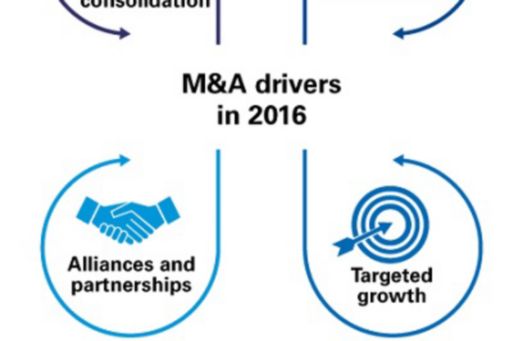Insurance M&A trends: A year in review and predictions for 2016
Insurance M&A trends
In our latest M&A trends report, we take a look back at 2015 deal activity across the insurance sector globally and provide insight into the trends we expect to see unfold over the next 12 months.

M&A continues to play a critical role in enabling insurers to pursue their strategic ambitions. In an increasingly integrated economy, deal activity will flow both into and out of high growth markets, combined with consolidation and rationalization in mature markets. Regulation, innovation and margin pressure, sparked by current industry dynamics will fuel this activity, resulting in many insurers adopting a ‘Grow’ or ‘Go’ strategy across their portfolio.
What happened in 2015
As anticipated 2015 was a highly active year for M&A across the sector. Cross-border M&A and transactions driven by regulatory change, or insurers’ focus on efficiency and service capabilities dominated 2015. The year was also marked by an impressive volume of reverse deal flow, as acquirers from Asia, particularly China and Japan, invested in mature markets across Europe and the US. Positive regulatory developments, such as Obamacare in the US and the increase in Foreign Direct Investments limits in India, acted as catalysts for activity. Additionally, we saw large P&C deals driven by continuing margin pressure, creating the need for scale and complementary underwriting capability.
The year ahead
We don’t expect the underlying market fundamentals to change in the short-term and, accordingly, we expect the trends that started to emerge over the last 12 months will continue or accelearate throughout 2016. Market conditions will drive further consolidation and exits from the sector and, when combined with a diverse group of potential buyers, create an ideal deal environment. Our overarching view is based around the trend of ‘Grow’ or ‘Go’, which will lead to targeted M&A to support growth and exit of non-core businesses. Supporting this strategy are four key drivers.
Drivers of M&A in 2016

Portfolio rationalization
The sector has responded to the underlying market dynamics created by continuing low interest rates, increasing competitive pressure on pricing combined with disruption from technology innovations and new entrants. In Europe, we believe Solvency ll will act as an accelerator of activity, forcing owners of insurance businesses to critically assess their strategy and geographic coverage, product development and distribution reach. We also expect to see increasing attention on the management of back books and legacy portfolios.
Targeted growth
At the same time, we expect to see targeted M&A to support growth in core markets, with acquisitions or distribution agreements that enhance geographic coverage, underwriting capability or provide access to new customers. High growth markets will continue to be a focus, with sub-Saharan Africa continuing to experience high deal volumes as insurers look to unlock untapped potential. We also foresee the large brokers continuing to acquire smaller/niche players to expand their product capability. While we also expect insurers to expand across the value chain acquiring specialist broking firms with complementary capabilities.
Power of alliances
One of the more interesting trends we expect to develop is a greater use of alliances and partnerships to create more efficient operating models both from a capital and capability perspective. The sector is ripe for disruption and if insurers do not take an active approach new entrants could capture the most profitable segment of the value chain. It is also clear that insurers will invest additional capital in FinTech, either through direct investments or by establishing innovation hubs to promote collaboration. We expect to see a mix of venture capital style investment models, hubs and direct investments and partnerships unfold.
Investment corridors and consolidation
As the global insurance market becomes more integrated, we expect cross border deal flow to be a critical element of the M&A environment. We expect to see countries that have historically been the recipient of foreign investments start to reverse the direction of deal flow. Consolidation will continue, however we don’t believe that size alone will be sufficient in itself. For the larger deals to be successful, the combination must add complimentary capabilities, such as underwriting, geographic coverage or distribution. This activity is likely to occur in both the primary and reinsurance markets. In addition, we expect to see an increased involvement from debt funds providing capital support to the sector.If you would like to learn more about these trends, or discuss your companies M&A strategy, please contact your local KPMG member firm office.
If you would like to learn more about these trends, or discuss your companies M&A strategy, please contact your local KPMG member firm office.